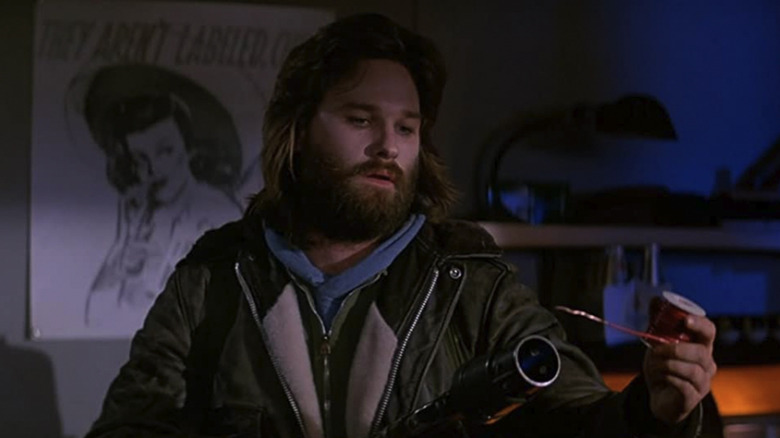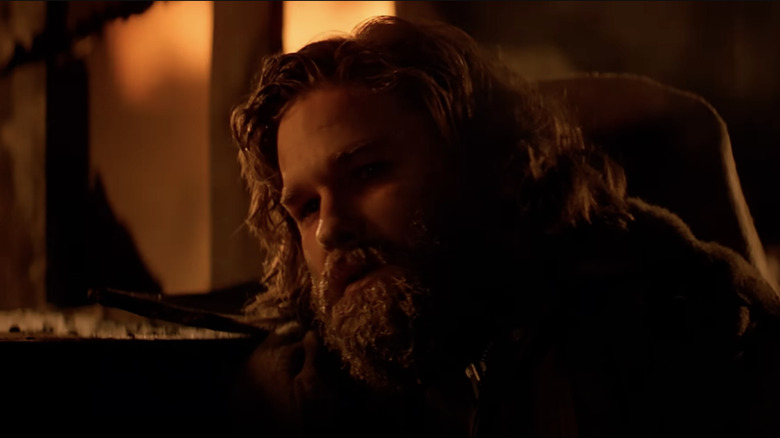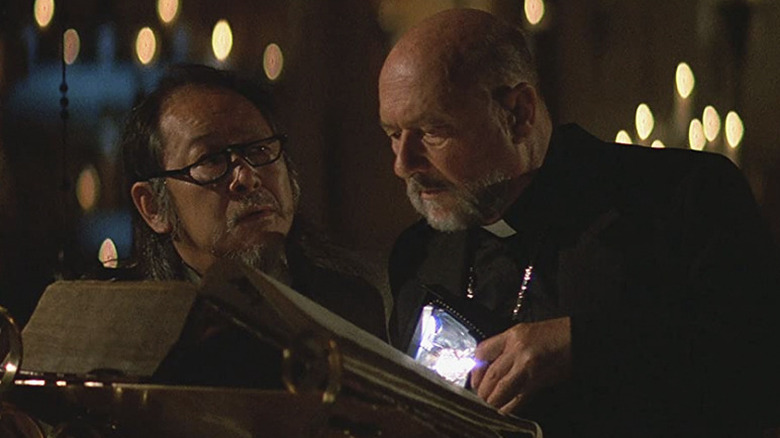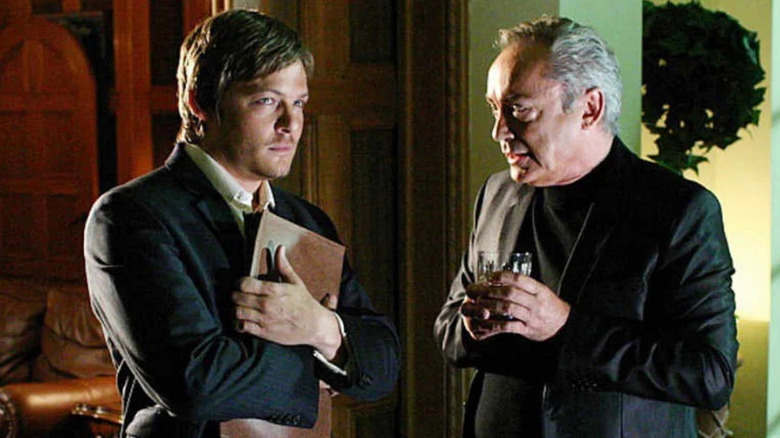How The Thing Accidentally Became The Start Of John Carpenter's Apocalypse Trilogy
John Carpenter planned "Halloween" to be an anthology series, but the relative failure of "Halloween III: Season of the Witch" put the kibosh on those plans. Instead, the series reintroduced classic antagonist Michael Myers, Carpenter's involvement lapsed until 2018's "Halloween," and "Season of the Witch" had to settle for being a cult classic.
However, Carpenter did get to create a different type of film series: a thematic one. His so-called "Apocalypse trilogy" is made up of "The Thing," "Prince of Darkness," and "In The Mouth of Darkness," three films that were released across more than a decade, hitting theaters in 1982, 1987, and 1994, respectively. Despite no overt story links between them, they each depict the end of the world, wrought by a force much greater and terrifying than humanity.
In a 2022 interview with Vulture, Carpenter recalls how this loose trilogy was not something he planned, but instead a career arc that happened organically after he made a realization when working on "The Thing."
Stumbling into the apocalypse
In "The Thing," the antagonist is an alien being which, through contact, absorbs other life into its collective. Once the characters get a sense of what they're dealing with, the biologist Blair (Wilford Brimley) runs a computer projection and discovers that if the Thing reaches civilization, it would take just three years for it to assimilate the entire population of Earth. Thus, Blair sabotages the camp's transportation and communication in an attempt to prevent the Thing from leaving.
At the film's end, the two survivors, MacReady (Kurt Russell) and Childs (Keith David), decide to condemn themselves to a freezing death to defeat the Thing; Childs asks, "How will we make it?" and MacReady replies, "Maybe we shouldn't."
According to Carpenter, the characters' slow realization about the stakes reflected his own (via Vulture):
"Well, I got fascinated at some point with the end of things. 'The Thing' turned out to be an end-of-the-world project. I don't think I knew at first. It was just a monster movie, but the implications of 'The Thing' became clear, and it was like, 'Oh dear, there's no way out of this. It's the end of mankind.' When you talk about the end of things, that's an apocalypse."
While Carpenter stumbled into making an apocalypse movie with "The Thing," he purposefully continued exploring that theme later in his career.
Three different apocalypses
In "Prince of Darkness," a priest (Donald Pleasance) inherits knowledge of a mysterious cylinder hidden beneath a Los Angeles church. Confounded, he hires a group of quantum physics students to work in the church and help him learn what it is. They discover the green liquid contained in the cylinder is Satan himself; the time of the devil's freedom is nigh, and he plans to pull his father, the "Anti-God," from the anti-matter universe into ours.
From the opening frame of a full moon, underscored with a bone-chilling theme, "Prince of Darkness" is ominous — and that never lets up. The ending even implies the characters just forestalled the apocalypse, not prevented it. Throughout the film, the characters dream of a message from 1999, wherein a shadowy figure emerges from the church. One of the protagonists, Brian (Jameson Parker), receives the message even after Satan has been sealed with his father.
"In The Mouth of Madness," one of Carpenter's overlooked works, has none of the ambiguity. John Trent (Sam Neill) is hired to find missing horror author Sutter Cane. The lines between Cane's stories and reality blur, as his writing has unleashed Lovecraftian horrors which now wait to strike and take back the world. Cane's last novel, titled — what else? — "In The Mouth of Madness" will bring the apocalypse to fruition, and despite Trent's pleas, it's released (then adapted) upon the world. As humanity falls, Trent sits down in an abandoned theater to watch the movie; as he discovers, it's the same movie he's been playing out and we've been watching.
A trilogy postscript
Carpenter has only directed two theatrically-released films since the turn of the century: "Ghosts of Mars" in 2001 and "The Ward" in 2010. Why? Because "[He'd] rather be home playing Xbox." His retirement is well-earned; the man has at least half a dozen masterpieces under his belt, even if it may have taken a while for them to be appreciated as such.
Carpenter's best work this millennium was for the Showtime series "Masters of Horror," a 2005-2007 anthology series where every episode was directed by an acclaimed horror director. Carpenter directed two episodes, including the eighth installment of the first season, "Cigarette Burns" (written by Drew McWeeny and Rebecca Swan). And it's clear the filmmaker holds the work in high regard: In that same Vulture interview, Carpenter listed that episode as "an honorable mention in the [Apocalypse] trilogy."
"Cigarette Burns" is not just a horror mystery, it's a detective story about horror movies. Film programmer Kirby Sweetman (a young Norman Reedus) is hired by eccentric enthusiast Bellinger (Udo Kier) to find the only existing print of "La Fin Absolue du Monde" (French for "The Absolute End of the World"). The film has only been seen once by an audience that was driven to homicide and insanity. The aging Bellinger, desperate to see the movie, "want[s] a least a taste of heaven before an eternity of hell." As Kirby gets closer to the cursed film, he begins seeing "cigarette burns," circles of hellfire enclosing horror within.
Of Carpenter's film trilogy, the episode is definitely closest to "In The Mouth of Madness." Both stories are about lone men investigating a supernatural mystery. Along the way, the projects bridge over into meta-text, where the root of horror is the stories we tell. After all, the only reason so many films show the end of the world is because we like to imagine it.



